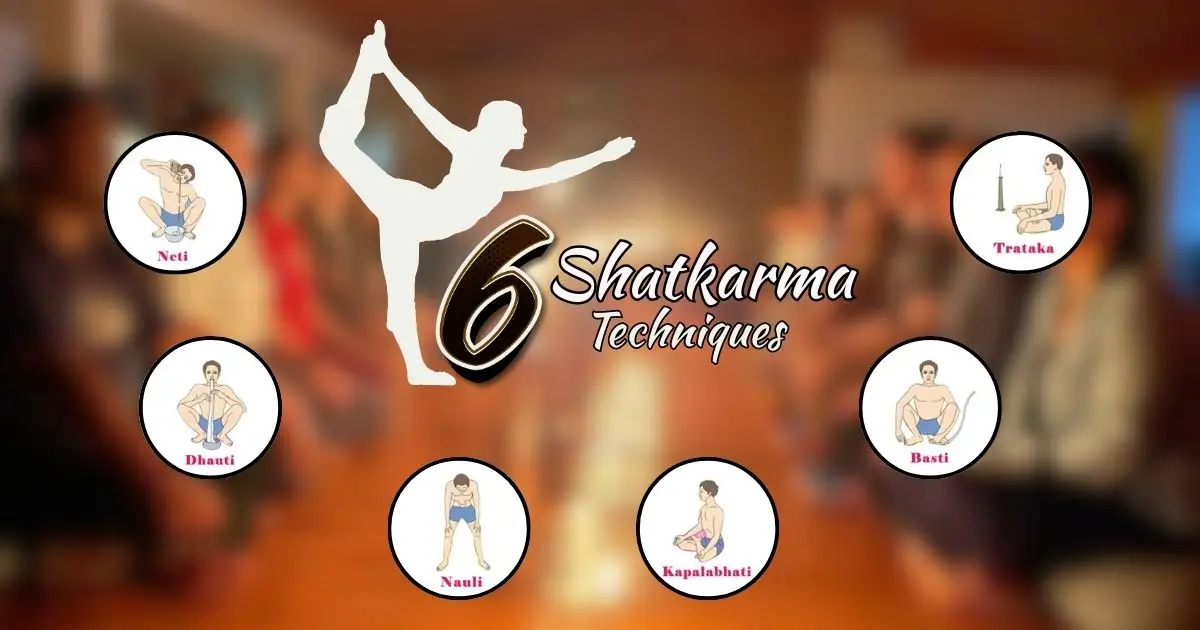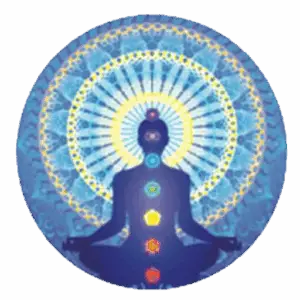
Have you ever come across the word Shatkarma? If you’re serious about progressing in yoga, you must first prepare your body. Traditional Hatha Yoga begins not with stretching or breathing exercises, but with cleansing techniques known as Shatkarma. These six ancient practices purify your internal systems, remove accumulated waste and toxins, and ensure optimal energy flow throughout the body. The result is better breathing, improved digestion, increased focus, and enhanced vitality—creating the conditions for deeper, safer yoga practice.
What is Shatkarma?
Shatkarma is a Sanskrit term meaning “six actions”. These six cleansing techniques are outlined in classical yogic texts, particularly the Hatha Yoga Pradipika (Chapter 2, Verse 22) and the Gheranda Samhita. Each technique targets a specific area of the body—such as the stomach, colon, nasal passages, eyes, abdominal muscles, or brain region—and serves to eliminate blockages that restrict healthy function and energy movement.
The six Shatkarma techniques are:
- Dhauti (digestive tract cleansing)
- Basti (colon cleansing)
- Neti (nasal cleansing)
- Trataka (eye cleansing and focus training)
- Nauli (abdominal massage and toning)
- Kapalbhati (frontal brain and respiratory cleansing)
(*Kapalbhati is often confused with Pranayama, but it’s actually Shatkarma)
Dhauti – Cleansing the Digestive Tract
Dhauti includes several methods designed to clean the esophagus and stomach, removing mucus, acid buildup, and undigested waste. Variations include:
- Vamana Dhauti (Kunjal Kriya): Drinking warm saline water and gently inducing vomiting
- Vastra Dhauti: Swallowing and removing a clean cotton cloth to cleanse the stomach lining
- Danta and Jihva Dhauti: Cleaning the teeth, tongue, and inner mouth
- Agnisara: Rapid abdominal movement to stimulate digestion
Benefits:
• Clears mucus and toxins from the stomach
• Improves digestion and reduces acidity
• Eliminates bad breath and bloating
• Increases energy by improving nutrient absorption
Caution: Avoid Dhauti if you have ulcers, high blood pressure, or digestive disorders. Always learn from a qualified teacher.
Basti – Cleansing the Colon
Basti is the yogic version of an enema and is aimed at cleansing the large intestine. It comes in two main forms:
- Jala Basti: Performed while seated in water, drawing water into the colon through abdominal suction
- Sthala Basti: A dry technique using air instead of water
Benefits:
- Clears impacted waste from the colon
- Relieves constipation and gas
- Improves digestion and nutrient absorption
- Reduces bloating and water retention
- Balances the Vata dosha
Caution: This is an advanced technique. Incorrect practice may lead to injury or infection. Only perform under expert guidance.
Neti – Nasal Cleansing
Neti is used to clear the nasal passages and sinuses, making it easier to breathe and improving oxygen intake. There are two traditional forms:
- Jala Neti: Saline water is passed through the nostrils using a neti pot
- Sutra Neti: A soft rubber catheter or waxed thread is inserted into the nostril and pulled out through the mouth
Benefits:
- Opens nasal passages and clears mucus
- Reduces sinusitis, allergies, and nasal congestion
- Improves breathing and oxygen efficiency
- Sharpens mental clarity and reduces snoring
- Enhances preparation for pranayama
Caution: Use only sterile saline water. Avoid during nasal infections or colds. Sutra Neti should always be learned with supervision.
Trataka – Eye Cleansing and Mental Focus
Trataka involves gazing steadily at a single object—often a candle flame—without blinking, until the eyes begin to water.
Benefits:
- Strengthens eye muscles and improves vision
- Promotes tear production and cleans the eyes
- Enhances concentration, memory, and focus
- Reduces eye strain from digital screens
- Calms the mind and helps regulate sleep pattern
Caution: Those with eye conditions (glaucoma, conjunctivitis) should start slowly and seek guidance. Do not overstrain the eyes.
Nauli – Abdominal Cleansing and Toning
Nauli is the rhythmic churning and isolation of abdominal muscles. It requires control and mastery of Uddiyana Bandha (abdominal lock) before practice.
Forms of Nauli:
- Madhyama Nauli: Central muscle isolation
- Vama Nauli: Left-side churning
- Dakshina Nauli: Right-side churning
Benefits:
- Stimulates digestion and detoxifies abdominal organs
- Boosts metabolism and core strength
- Tones the internal organs and abdominal wall
- Regulates hormones and reproductive health
- Reduces constipation and sluggish digestion
Caution: Avoid during pregnancy, menstruation, hernia, ulcers, or after abdominal surgery. Only practice under a trained teacher.
Kapalbhati – Frontal Brain and Respiratory Cleansing
Kapalbhati involves rapid, forceful exhalations through the nose using abdominal contractions, with passive inhalations.
Benefits:
- Clears lungs and sinuses
- Improves respiratory capacity and oxygen uptake
- Increases alertness and focus
- Stimulates the digestive organs
- Energizes the body and removes sluggishness
Caution: Not suitable for those with high blood pressure, heart disease, epilepsy, or during pregnancy. Start with short rounds under supervision.
Why You Should Learn Shatkarma First
Traditional yoga texts emphasize that cleansing is the foundation for all other practices. Without removing physical obstructions—like undigested food, excess mucus, or shallow breathing—you won’t receive the full benefits of asana, pranayama, or meditation.
Tangible benefits of regular Shatkarma practice include:
- Improved digestion and elimination
- Deeper and smoother breathing
- More energy and better focus
- Reduction in allergies and respiratory issues
- Clearer thinking and reduced brain fog
- A lighter, more balanced body
These are practical, measurable outcomes—not abstract goals. When your systems function cleanly, you feel it immediately.
Always Learn Shatkarma With Guidance
Even though some techniques like Jala Neti or Trataka may appear simple, none of the Shatkarmas should be practiced without proper instruction. Each method has specific guidelines, contraindications, and preparation steps that only an experienced teacher can convey safely.
At Gyan Yog Breath, we teach all six Shatkarma techniques in alignment with the classical Hatha Yoga Pradipika and Gheranda Samhita. We ensure safe, individualized instruction based on your health condition and goals. Whether you want to improve digestion, breathe more freely, or reset your body’s internal systems, Shatkarma offers an effective, proven method.
If you have any specific questions, feel free to contact us via our contact form here.







